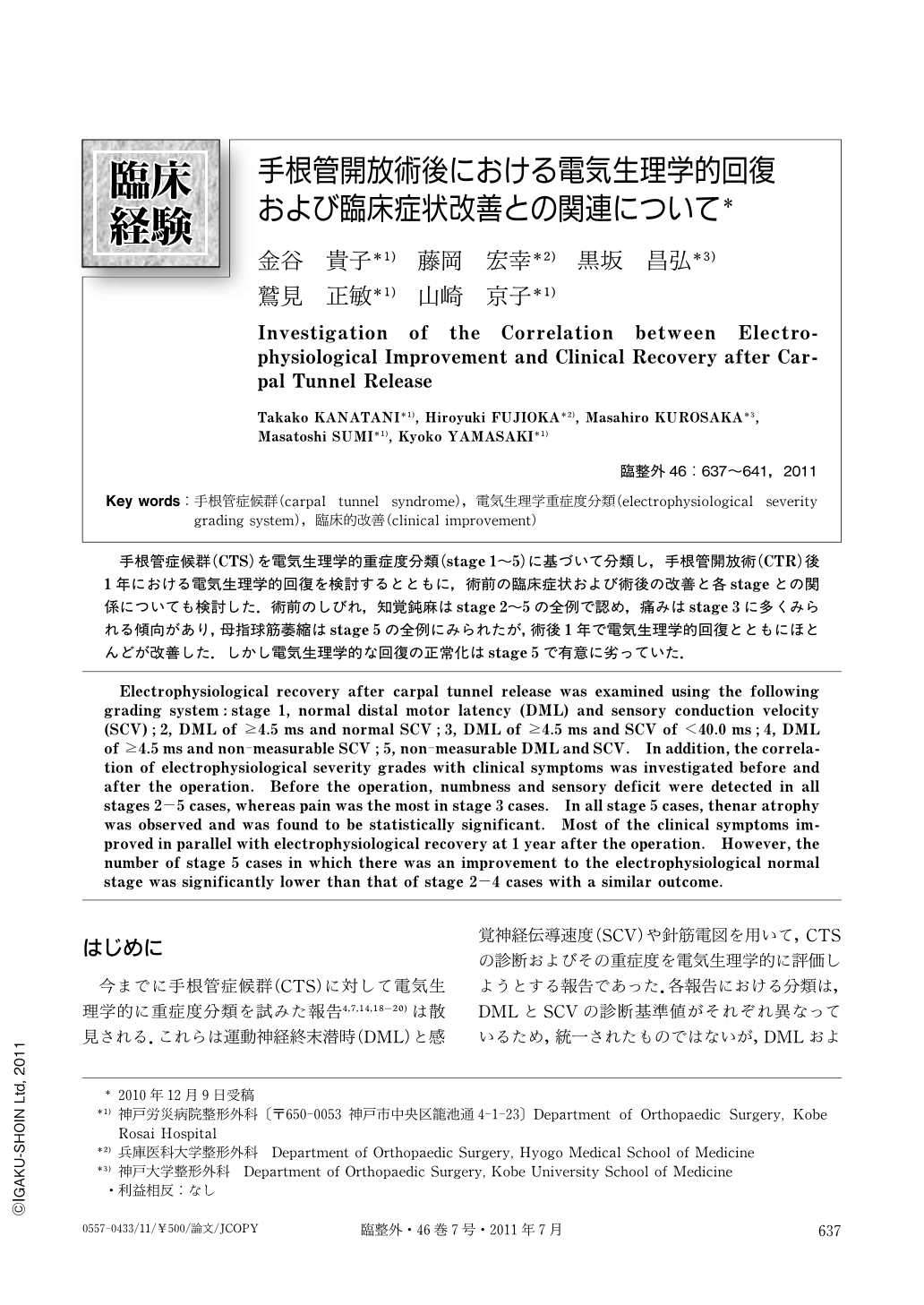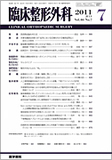Japanese
English
- 有料閲覧
- Abstract 文献概要
- 1ページ目 Look Inside
- 参考文献 Reference
手根管症候群(CTS)を電気生理学的重症度分類(stage 1~5)に基づいて分類し,手根管開放術(CTR)後1年における電気生理学的回復を検討するとともに,術前の臨床症状および術後の改善と各stageとの関係についても検討した.術前のしびれ,知覚鈍麻はstage 2~5の全例で認め,痛みはstage 3に多くみられる傾向があり,母指球筋萎縮はstage 5の全例にみられたが,術後1年で電気生理学的回復とともにほとんどが改善した.しかし電気生理学的な回復の正常化はstage5で有意に劣っていた.
Electrophysiological recovery after carpal tunnel release was examined using the following grading system:stage 1, normal distal motor latency (DML) and sensory conduction velocity (SCV);2, DML of ≥4.5 ms and normal SCV;3, DML of ≥4.5 ms and SCV of <40.0 ms;4, DML of ≥4.5 ms and non-measurable SCV;5, non-measurable DML and SCV. In addition, the correlation of electrophysiological severity grades with clinical symptoms was investigated before and after the operation. Before the operation, numbness and sensory deficit were detected in all stages 2-5 cases, whereas pain was the most in stage 3 cases. In all stage 5 cases, thenar atrophy was observed and was found to be statistically significant. Most of the clinical symptoms improved in parallel with electrophysiological recovery at 1 year after the operation. However, the number of stage 5 cases in which there was an improvement to the electrophysiological normal stage was significantly lower than that of stage 2-4 cases with a similar outcome.

Copyright © 2011, Igaku-Shoin Ltd. All rights reserved.


